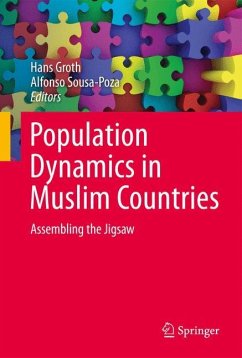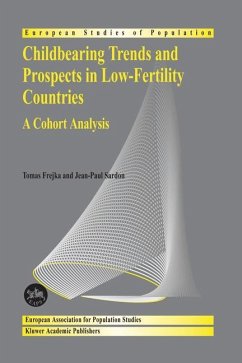
Social Security, Household, and Family Dynamics in Ageing Societies
Versandkostenfrei!
Versandfertig in 1-2 Wochen
77,99 €
inkl. MwSt.
Weitere Ausgaben:

PAYBACK Punkte
39 °P sammeln!
Many industrialized countries are facing large problems with their public pension systems in the 21st century. An unfavourable age distribution, with lower population shares in working ages and increasing shares and numbers of elderly persons in the future will lead, under current pension systems, to a drop in contributions and at the same time to sharply rising amounts of benefits paid. This book analyzes the impact of dynamics in age structure and marital status composition on future public pension expenditures in twelve industrialized countries. It shows that there is no demographic respon...
Many industrialized countries are facing large problems with their public pension systems in the 21st century. An unfavourable age distribution, with lower population shares in working ages and increasing shares and numbers of elderly persons in the future will lead, under current pension systems, to a drop in contributions and at the same time to sharply rising amounts of benefits paid.
This book analyzes the impact of dynamics in age structure and marital status composition on future public pension expenditures in twelve industrialized countries. It shows that there is no demographic response to population ageing at the horizon 2030. Neither an increase in fertility nor an inflow of migrants can rejuvenate national populations, unless fertility and/or migration reach unrealistically high levels. Therefore, the overall conclusion of this book is that demographic variables are of limited help to relieve the burden of future public pension expenditures. Substantial reductions of the public pension burden have to be sought in socioeconomic measures, and not in adjusting demographic conditions.
The book includes various demographic and pension scenarios for pension costs in the coming decades for Austria, Canada, the Czech and Slovak Republics, Finland, France, Germany, Hungary, Italy, the Netherlands, Norway, Poland, and Sweden. Not only old age pensions, but also disability and survivor pensions have been investigated. Variant projections were calculated for changes in demographic, labour force, and pension system variables. In addition, separate case studies for three countries deal with: a pension system in Austria in which benefits depend on the number children ever born; the impact of household dynamics on social security in the Netherlands, not just marriage and marriage dissolution; and with the consequences of economic growth for public pensions in Sweden.
This book analyzes the impact of dynamics in age structure and marital status composition on future public pension expenditures in twelve industrialized countries. It shows that there is no demographic response to population ageing at the horizon 2030. Neither an increase in fertility nor an inflow of migrants can rejuvenate national populations, unless fertility and/or migration reach unrealistically high levels. Therefore, the overall conclusion of this book is that demographic variables are of limited help to relieve the burden of future public pension expenditures. Substantial reductions of the public pension burden have to be sought in socioeconomic measures, and not in adjusting demographic conditions.
The book includes various demographic and pension scenarios for pension costs in the coming decades for Austria, Canada, the Czech and Slovak Republics, Finland, France, Germany, Hungary, Italy, the Netherlands, Norway, Poland, and Sweden. Not only old age pensions, but also disability and survivor pensions have been investigated. Variant projections were calculated for changes in demographic, labour force, and pension system variables. In addition, separate case studies for three countries deal with: a pension system in Austria in which benefits depend on the number children ever born; the impact of household dynamics on social security in the Netherlands, not just marriage and marriage dissolution; and with the consequences of economic growth for public pensions in Sweden.












